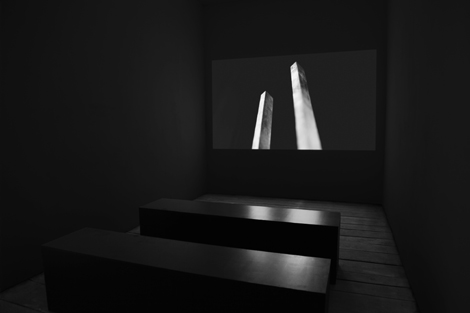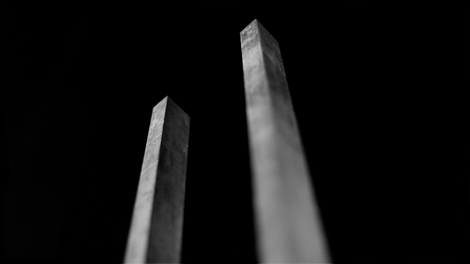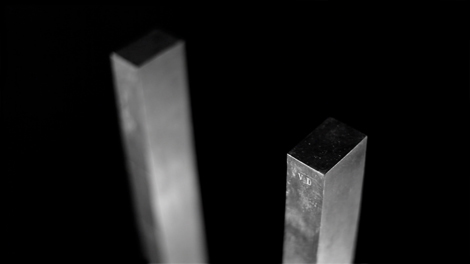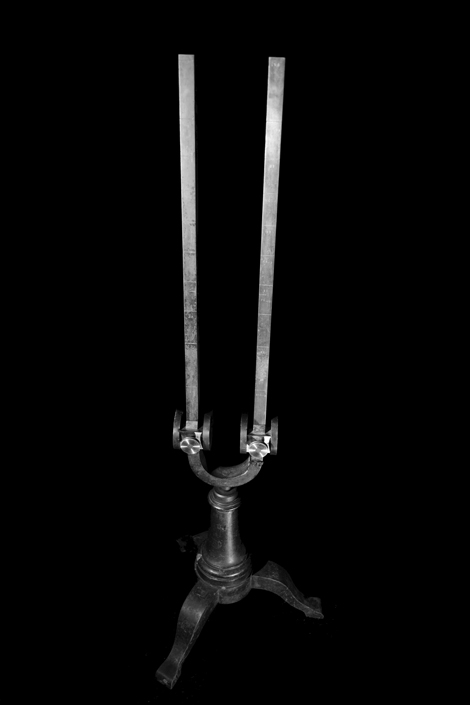
Installation view, Acoustic Shadows, Le Bon Accueil, Rennes, France, 2012


Video screenshots

Koenig's large tuning fork, collection of the Physics Instruments Museum, Rennes University, France
Video installation, variable dimensions, 6’42’’, 2012
(Looped black and white HD video projection, wood,
amplifier, LF transducers)
Coproduction Le Bon Accueil, Rennes, France
The movie shows the oscillatory movements of the Koenig’s large tuning fork decomposed and captured from different points of view. The inaudible oscillation is emitted as vibrations in the two black monoliths laid down and used as sits in front of the silent movie. The “sound track” is not audible anymore, but haptic.
The large tuning fork was conceived in 1889 by the physicist
Karl Rudolph Koenig (1832-1901). It was meant to make experiments on
low frequencies oscillations and to evaluate the lowest audible
tones threshold for the human ear. It is about 60 inches high and
can be tuned with the weights placed on its arms. As it can vibrate
between 16 and 24 Hz, it is actually a silent tuning fork.
On the video, this paradoxical instrument is tuned at 23 Hz and
filmed at a regular video frequency of 25 frames per second. Then,
the movie produces a stroboscopic effect looking like a slow motion
when the film is actually projected at its real capture speed, as it
is proved by the movements of flying dusts and the motion of hands
manipulating the instrument.
Two very low frequency sine waves are emitted in the benches. One is tuned with the video frame rate (25 Hz) when the other corresponds with the actual tuning fork vibration (23 Hz). Their interference produces a beating effect synchronized with the motion on the screen (about two oscillations per second) that one can feel through his body.